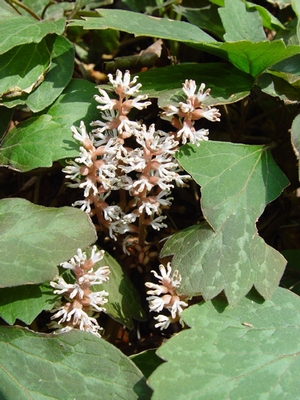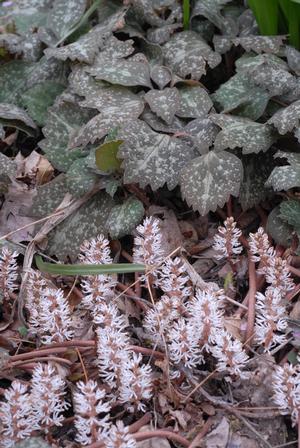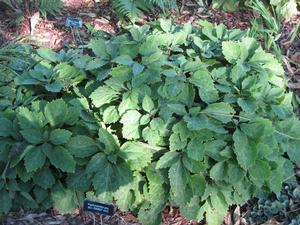Pachysandra procumbens
Common: Allegheny spurgePachysandra procumbens LP32 - 32 per flat
- Height: 6"-10"
- Spread: 1'-2'
- Spacing: 12"
- Hardiness Zone(s): 4-9


Pachysandra procumbens LP32 - 32 per flat


Why plant English Ivy, Vinca or Liriope when you can enjoy this native evergreen gem? Fragrant, white flower spikes appear in spring, later becoming camouflaged by a new flush of gorgeous, crisp green foliage. Leaves have a scalloped margin and take on an attractive pale silver mottling.
Plant in moist, humus-rich, acidic soil under part to full shade.
Why plant English Ivy, Vinca or Liriope when you can enjoy this native evergreen gem? Fragrant, white flower spikes appear in spring, later becoming camouflaged by a new flush of gorgeous, crisp green foliage. Leaves have a scalloped margin and take on an attractive pale silver mottling. A low-growing perennial groundcover, Pachysandra procumbens spreads slowly into colonies via long rhizomes. In warmer climates, leaves and stems are evergreen. Deer-resistant, disease-resistant and drought-resistant, this is a versatile native groundcover that covers the ground densely without the domineering qualities of P. terminalis.
Called Allegheny spurge due to its natural range, this native Pachysandra can be found in pockets of Pennsylvania and New York but truly resides from North Carolina and down along into the southeastern states. Prefers moist, humus-rich acidic soil in part to full shade but can tolerate drought once established. Avoid areas with full sun or with poor soil drainage as this will harm the plant. Good air circulation and drainage lessens the risk for leaf blight and root rot.
A perfect native substitute to Pachysandra terminalis and English ivy, we enjoy this groundcover planted along the edge of a woodland garden or as an underplanting to trees and shrubs. It is useful for erosion control and shady sloped banks and works well in areas where the lawn is shaded out by dense tree coverage. Very little is know about the floral-faunal relationships of this plant.